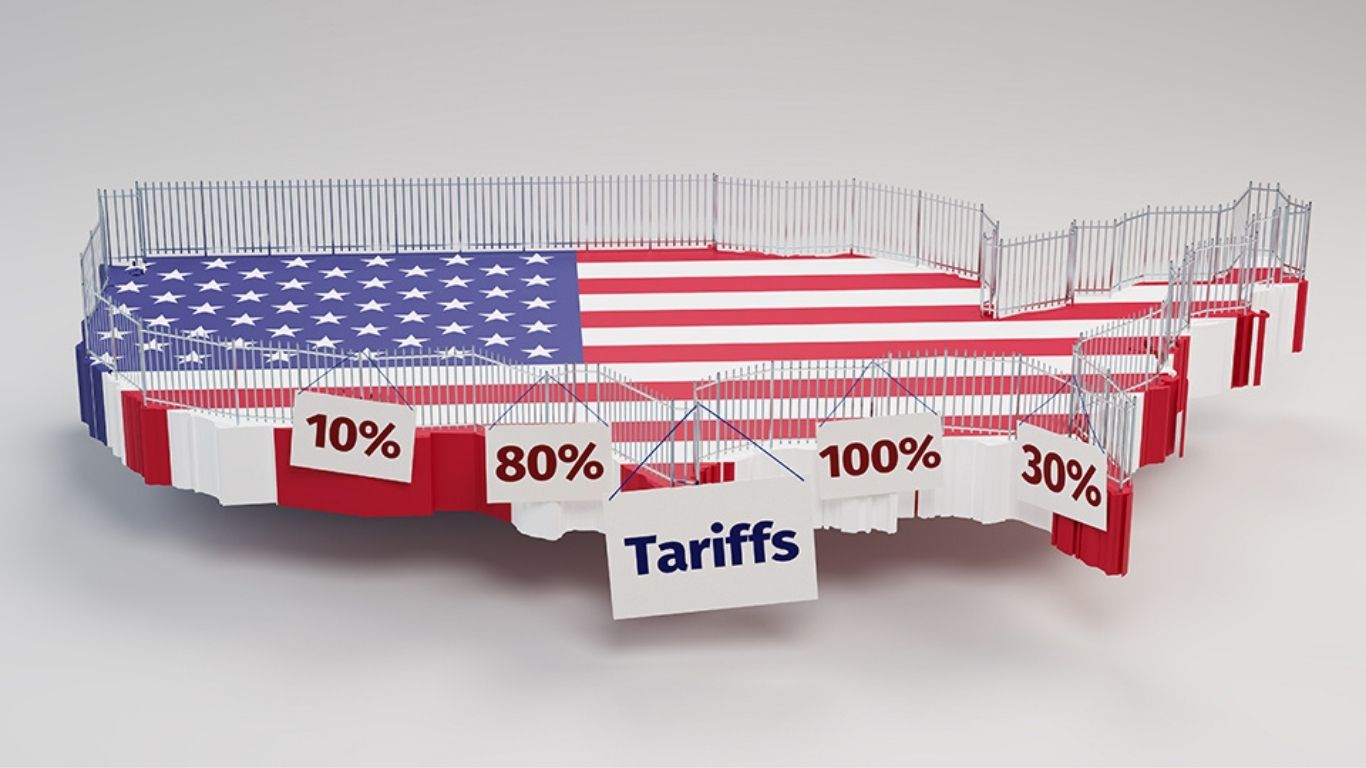Japan’s consumer inflation accelerated to 3.2% in March 2025, up significantly from the 3% of the last month and as per economists’ median forecast. The key driver to this inflation increase came in an unheard-of 92.1% increase on an annual basis in rice prices, a record high after over half a century, which reflects the economic strain that is being experienced by the nation. Here, we address the reasons, repercussions, and overall economic context of Japan’s inflation increase, its influence on consumers, policymakers, and monetary policy of the Bank of Japan, along with briefly mentioning the looming threat of US tariffs.
The Rice Price Shock: A Staple Under Pressure
Japan’s staple, rice, has become a symbol of the country’s inflationary strain. The 92.1% increase, the largest since 1971, is the culmination of different determinants. Poor weather conditions, including typhoons and hot weather, have disrupted domestic rice production, limiting supply. In addition, global supply chain shortfalls combined with higher input prices, such as fertilizer and oil, have fueled the issue. Japan’s reliance on imported agricultural inputs, combined with a significantly weaker yen (around 142.40 per USD), has served to heighten these cost pressures.
The domino effect of higher rice prices extends to household budgets. Food prices climbed 7.4% on-year, decelerating only from February’s 7.6% but deep into consumers’ pockets nonetheless. Over 4,000 foods are to be raised this April 2025, according to Teikoku Databank, as an indication of perpetuating inflation pressure. To consumers who’ve been blessed with over ten years of deflation, such increases are astounding, particularly for consumers from the bottom rungs to the middle-class group.
Wider Inflationary Trends
Japan’s underlying core consumer price index (CPI) without fresh foods accelerated to 3.2% last month, while an even broader measure without energy rose 2.9% the fastest since March 2024. Inflation has surpassed the BOJ’s 2% target for nearly three years, far from the deflationary era that dominated Japan’s economy throughout the 21st century. Domestic demand-driven service prices rose to 1.4% to touch the level of January.
The persistence of inflation is to be attributed to companies’ willingness to pass it on, according to NLI Research Institute economist Taro Saito. Inflation is driven by inflation of foods, Saito observed, adding that companies are no longer only passing on cost increases, but where possible, they are even pricing past cost increases. The adjustment in pricing is an early sign of inflation expectations becoming entrenched, one that has been an aim of the BOJ to create over the long term.
The Bank of Japan’s Delicate Balancing Act
The BOJ, led by Governor Kazuo Ueda, has been hawkish but guarded, warning of gradual rises with inflation remaining over target. The March data uphold this position, with high rates of increase across prices indicative of the Japanese economy verging away from deflation into an inflationary mindset. The BOJ faces an intricate task, however.
On the one side, chronic inflation is an argument for tightening monetary policy to prevent overheating. Against this, external risks, led by the threat of US tariffs from a renewed administration, pose the significant challenge. Bloomberg Economics economist Taro Kimura states that while “inflation on the boil is an argument to taper stimulus,” the potential economic drag of tariffs is an argument to hold off. The BOJ is likely to hold rates steady at its next meeting, with an increase possible by July 2025 pending tariff developments.
Yen weakness is also contributing to the compounding issue of the BOJ. A depreciating currency raises the cost of imports, fueling inflation but at the expense of consumers as well as businesses. Even strong CPI readings may fail to support the yen if tariff uncertainties persist, reducing the room for the BOJ, said Resona Holdings senior strategist Keiichi Iguchi.
Political and Social Implications
The wave of inflation, particularly the rice inflation shock, has political consequences for Japanese PM Shigeru Ishiba. His own approval rating reached an historic low in April 2025, according to an NHK survey, as people are frustrated over rising living costs. Consumer confidence plummeted into an historic two-year low, where household inflation expectation continues to increase, according to government and BOJ data.
As an election is to be held by July 2025, Ishiba’s government is facing mounting pressure to address cost-of-living concerns. The domestic media have reported that cash grants or tax rebates are on the cards to give consumers some respite. But those steps increase inflation, so it is going to be a tough fight for the government. The increase in the cost of rice is particularly emotive as rice is imbued with great cultural importance. Rice price hikes signal broader economic exposure to risk for numerous Japanese households, fueling calls for government action. Ishiba’s success at addressing this issue will be essential to garnering support ahead of the election.
The Tariff Threat and International Context
Japan’s inflation dynamics are unfolding amidst global economic uncertainty with US tariffs posing a major risk factor. The only G7 country facing rising inflation along with potential US trade restrictions, Japan is exceptionally exposed. Tariffs proposed would disrupt exports, which expanded at a below-trend rate through early 2025, and at least potentially drive the yen weaker, creating additional upward pressure on import-related inflation.
The government said it is willing to increase US rice purchases in talks over tariffs, according to Yomiuri. The move would reduce some pressure on trade but impose more strain on domestic rice growers, who are facing shortages. Japan’s tariff negotiation team is optimistic for an early outcome but the outcome is uncertain.
Japan is an outlier among nations around the world with 3.2% having been the highest among G7 economies that have generally seen easing inflation pressures. The divergence is an attestation to Japan’s peculiar economic trajectory, one influenced by the country’s long history of fighting deflation, recent supply shocks, and structural factors like shortages of labor.
What to Expect: Sustained Inflation or Tariff-Led
Japan’s inflation is to remain higher over the coming months due to enduring cost pressures. Staff shortages, expensive materials, and yen depreciation are leading companies to pass on costs to consumers, a trend Saito describes as consistent with BOJ expectations until tariffs came along to derail the forecast. The BOJ has been flagging increases at six-month intervals, but tariff uncertainty is to delay this schedule.
For consumers, the outlook is bleak. Increased prices, particularly of commodities like rice, are nibbling at purchasing power. The government subsidies on electricity have slightly eased the situation, but they are negligible compared with the overall jump in food and service prices. The policymakers have to thread the needle between the risk of fueling demand by doling out freebies versus triggering still more inflation.
BOJ, though, has a choice to make. Here’s the risk of tightening too soon: it could choke off growth, particularly if tariffs happen, or taking risks by hiking late can lead to runaway inflation. As Saito notes, “The tariffs will be weighing on the economy, no doubt,” prompting monetary policy expectations to be recalibrated.
Conclusion
Japan’s inflation surge, led by record-high rice price rises, is reflecting broader changes across the nation’s economy. Consumers and companies are both grappling with chronic rises, driven by supply shocks, yen depreciation, and evolving inflation expectations following years of deflation. The BOJ’s gradual rise cycle remains intact but is overshadowed by US tariff risks, while Prime Minister Ishiba is facing mounting political pressure to counter higher living expenses. As Japan navigates this bout of inflation, local and global forces will drive it. In the meantime, the record rice price is an immediate peek at the future both for consumers, who are facing it, and for policymakers who have to navigate the economy through turbulent waters.




